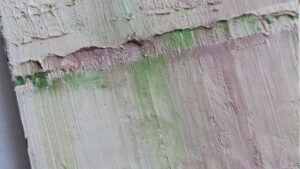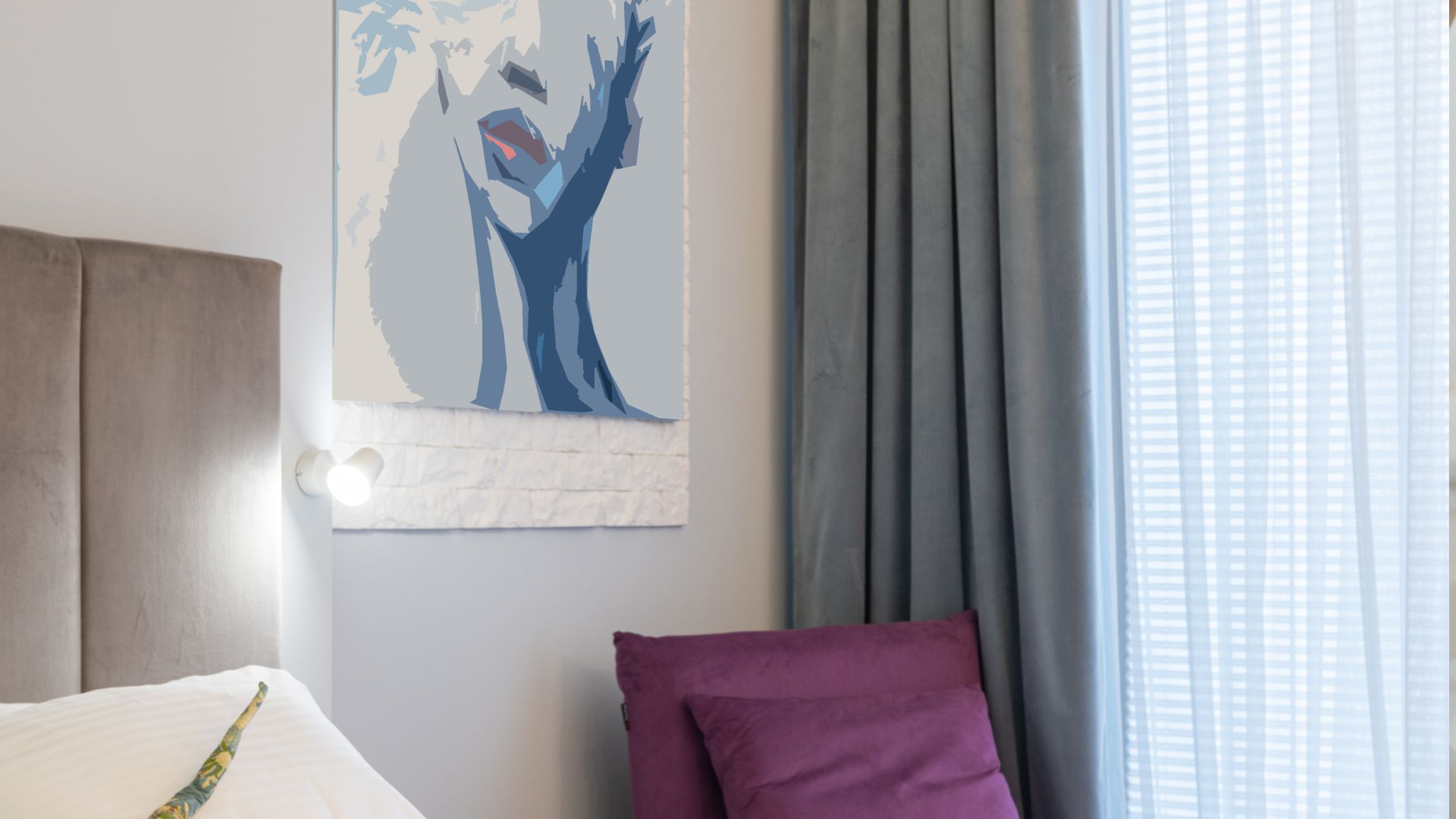Wall paint on canvas, commonly used in art and interior decoration, is generally safe for enclosed spaces when it’s fully dried and cured. However, there are crucial aspects to consider regarding the safety and potential risks associated with using wall paint on canvas indoors.
Understanding Wall Paint Composition
1. VOCs (Volatile Organic Compounds): Volatile organic compounds are chemicals that can vaporize and emit gases, potentially causing short and long-term health effects. Many wall paints contain VOCs, which are released during and after painting, contributing to indoor air pollution.
2. Acrylic, Oil, and Water-Based Paints: Acrylic paints are water-based and tend to have lower levels of VOCs compared to oil-based paints. Oil-based paints may contain higher levels of VOCs and take longer to dry, releasing fumes during this process.
Safety Measures for Enclosed Spaces
1. Ventilation: Adequate ventilation is crucial when painting indoors. Open windows and use fans to allow fresh air circulation, helping to disperse paint fumes.
2. Use Low-VOC Paints: Opt for paints labeled as “low-VOC” or “zero-VOC” as they contain fewer harmful chemicals, reducing potential health risks.
3. Allow Proper Drying Time: Ensure the painted canvas is fully dried and cured before placing it in enclosed spaces. This helps minimize the release of harmful fumes.

Potential Risks
1. Health Effects: Prolonged exposure to VOCs can lead to headaches, dizziness, respiratory issues, and long-term health problems. Children, pregnant women, and individuals with respiratory conditions are more sensitive to these compounds.
2. Allergies and Sensitivities: Some individuals may be allergic or sensitive to certain paint components, leading to skin irritations or allergic reactions.
So,….
While wall paint on canvas can be used indoors, ensuring safety involves using low-VOC paints, proper ventilation, and allowing ample drying time. These precautions minimize health risks associated with indoor painting.
Always prioritize safety when using wall paint on canvas in enclosed spaces. Choose low-VOC options, ventilate the area well, and allow the paint to fully dry before enjoying your beautifully decorated indoor spaces.
For further information on indoor air quality and safety, you may find these resources helpful:
- EPA – Indoor Air Quality
- American Lung Association – Indoor Air Quality
- Healthline – Understanding VOCs and Health Risks
Prioritizing safety ensures a healthier environment for everyone enjoying the space.
Safely Enjoying Wall Painted Canvases Indoors
When considering wall paint on canvas for indoor use, prioritizing safety ensures a comfortable and healthy environment. Let’s delve deeper into ways to ensure safe practices and maximize enjoyment while minimizing risks.
The Importance of Low-VOC Paints
1. Understanding Low-VOC: Low-VOC (Volatile Organic Compounds) paints contain fewer harmful chemicals, reducing the emission of potentially harmful gases. These paints contribute less to indoor air pollution, making them a safer choice for enclosed spaces.
2. Benefits of Low-VOC: Opting for low-VOC paints not only minimizes health risks but also contributes to better indoor air quality, especially in spaces where individuals spend considerable time.
Proper Ventilation Techniques
1. Ventilation Strategy: Ensure proper ventilation during and after painting. Opening windows and doors, using fans, and employing air purifiers with HEPA filters help remove fumes and maintain fresh airflow.
2. Painting Technique: Apply paint evenly and thinly. Thicker layers may take longer to dry and emit more fumes.
Safety Measures for Sensitive Individuals
1. Consideration for Vulnerable Groups: Individuals with allergies, asthma, or sensitivities to chemicals should avoid direct exposure to fresh paint fumes. Consider moving them away from the painting area until the fumes dissipate.
2. Protective Gear: If working with paint indoors, wear appropriate protective gear like masks, gloves, and eye protection to minimize direct contact with fumes and paint.
Ensuring Adequate Drying Time
1. Drying and Curing: Allow ample time for the paint to dry and cure completely. While paint may feel dry to the touch quickly, curing—when the paint reaches its maximum hardness and adhesion—takes longer. This period reduces the release of fumes.
2. Patience Pays Off: Rushing the drying process might result in incomplete curing, prolonging the emission of potentially harmful gases.
Final Thoughts
Wall paint on canvas can add vibrancy and personality to indoor spaces. By prioritizing safety measures such as opting for low-VOC paints, ensuring proper ventilation, and allowing adequate drying and curing time, you can enjoy the artistic and aesthetic benefits without compromising indoor air quality or health.
A safe and enjoyable indoor environment begins with informed choices and mindful practices. Prioritize safety, and revel in the beauty of your wall-painted canvases, knowing that you’ve taken the necessary steps to create a healthy space for everyone.
Feel free to explore these resources for further information on indoor air quality and safety:
- EPA – Indoor Air Quality
- American Lung Association – Indoor Air Quality
- Healthline – Understanding VOCs and Health Risks
Taking these steps ensures a safer, more enjoyable indoor space where art and comfort harmoniously coexist.
Comparison tabular
Here’s a comparison table summarizing the key points between using wall paint on canvas in enclosed spaces and ensuring safety:
| Aspect | Using Wall Paint on Canvas in Enclosed Spaces | Ensuring Safety |
|---|---|---|
| VOC Content | Regular paints may contain higher VOCs, contributing to indoor pollution | Opt for low-VOC paints to minimize harmful emissions |
| Health Risks | Prolonged exposure to VOCs can lead to health issues | Prioritize ventilation, protective gear, and safe practices |
| Ventilation | Adequate airflow needed during and after painting | Ensure proper ventilation to disperse fumes and maintain air quality |
| Drying Time | Proper drying and curing reduce fume emissions | Allow ample time for paint to dry and cure |
| Sensitive Individuals | Those with allergies or sensitivities should avoid direct exposure | Consideration for vulnerable individuals and their sensitivities |
This table provides a quick comparison between using wall paint on canvas indoors and implementing safety measures to ensure a healthier indoor environment.
Wrapping up
As you consider using wall paint on canvas to beautify your indoor spaces, remember that safety is paramount. Embracing art and décor should go hand in hand with creating a healthy environment for everyone.
Opting for low-VOC paints, ensuring proper ventilation, allowing adequate drying time, and considering the needs of sensitive individuals are the cornerstones of safely enjoying wall-painted canvases indoors. By taking these steps, you not only enhance your space aesthetically but also prioritize the well-being of those who inhabit it.
Let your creativity flourish while keeping safety at the forefront. With mindful choices and informed practices, your indoor spaces can be vibrant, welcoming, and, above all, safe for everyone to enjoy.
Happy painting and decorating!

For over a decade, I’ve been Mike, an artist, crafter, and designer deeply immersed in the Croc world. I thrive on crafting unique, size-inclusive patterns, fostering creativity, and sharing them on ktforum.com. My designs aim to ignite your creative spark and delight you, ensuring clarity and ease of use through rigorous testing. Join me in expressing your creative flair and showcasing your craft with joy.
Related Posts
- Is Wall Paint on Canvas Safe? Understanding Health Risks and Alternatives
Artistic expression knows no bounds, and sometimes that means exploring unconventional mediums. Using wall paint…
- Is Wall Paint Safe for Children to Use on Canvas Under Supervision
Art is a fantastic outlet for children to explore their creativity and express themselves. Using…
- Can You Paint Over Existing Wall Paint on Canvas
If you're an aspiring artist or someone enthusiastic about trying their hand at painting, you…
- Ensuring Longevity: Wall Paint on Canvas
When it comes to painting, the canvas serves as an artist's playground, a surface that…

